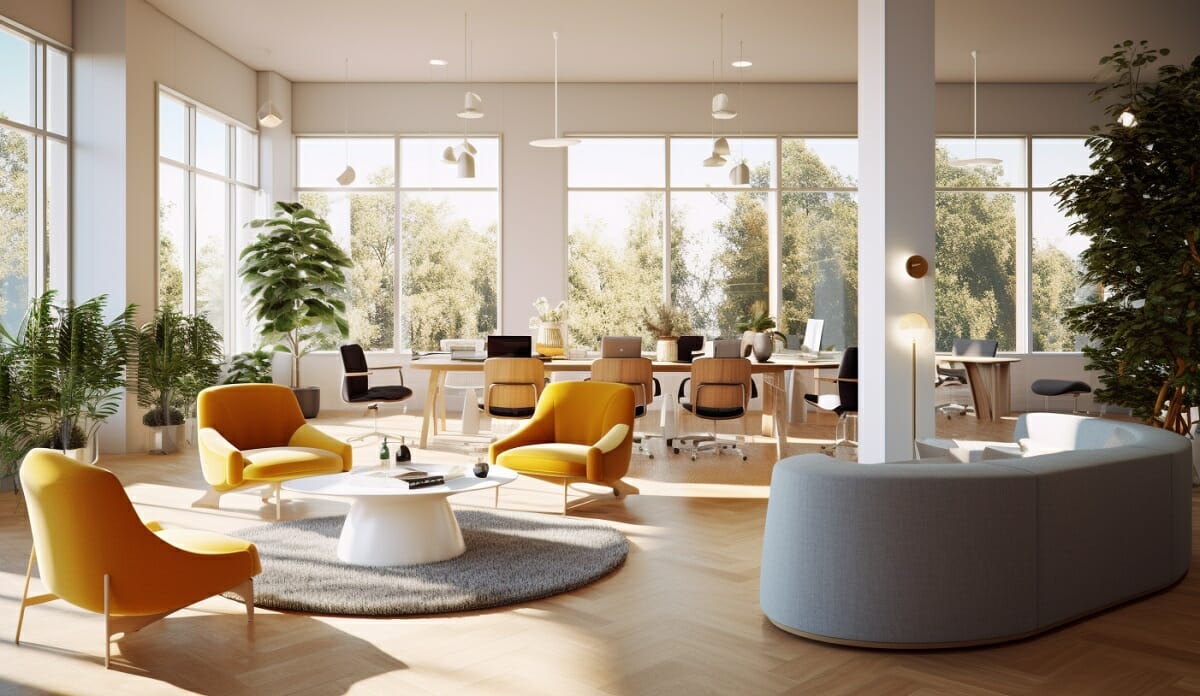
Creating an efficient and productive work environment is crucial for the success of any business. Thoughtful office design solutions can significantly impact the way employees work and interact with each other, leading to improved collaboration, creativity, and overall performance. By optimizing the layout, furniture, lighting, and technology within the office space, businesses can enhance productivity and employee satisfaction. In this article, we will explore the power of thoughtful office design solutions in maximizing efficiency.
The Impact of Office Design on Productivity
Office design goes beyond aesthetics; it plays a crucial role in influencing employee behavior and performance. Here are some key ways in which office design can impact productivity:
Open Layouts vs. Cubicles
- Open layouts encourage collaboration and communication among employees, leading to increased creativity and innovation.
- Cubicles can provide privacy and minimize distractions, but they may also isolate employees and hinder teamwork.
Natural Light and Biophilic Design
- Natural light and biophilic elements such as plants can boost mood and productivity, as well as reduce stress and fatigue.
- Access to natural light has been linked to improved sleep quality and overall well-being, contributing to better performance at work.
Key Office Design Solutions for Maximizing Efficiency
Ergonomic Furniture
Investing in ergonomic furniture can significantly improve employee comfort and health, ultimately enhancing productivity. Here are some considerations for selecting ergonomic furniture:
- Adjustable desks and chairs that support good posture and reduce the risk of musculoskeletal disorders.
- Monitor arms and keyboard trays to optimize the position of computer equipment for each individual's needs.
Flexible Workspaces
Creating flexible workspaces allows employees to choose the environment that best suits their task at hand. Here are some benefits of implementing flexible workspaces:
- Quiet zones for focused work, collaboration areas for group projects, and relaxation areas for breaks can cater to different work styles.
- Modular furniture and movable partitions enable easy reconfiguration of spaces to accommodate changing needs.
Technology Integration
Integrating technology into the office environment can streamline processes and enhance communication. Here are some ways to effectively integrate technology:
- Wireless charging stations and connectivity hubs to support a mobile workforce.
- Video conferencing systems and digital collaboration tools for seamless communication among remote and in-house teams.
Creating a Collaborative Environment
Fostering a collaborative culture within the workplace can lead to increased innovation and problem-solving. Here are some ways to promote collaboration through office design:
Common Areas and Shared Spaces
- Designating common areas such as break rooms, lounges, and meeting rooms for informal interactions and brainstorming sessions.
- Shared spaces with comfortable seating and whiteboards can encourage impromptu discussions and idea sharing.
Transparent and Accessible Layouts
- Transparent layouts with glass partitions and open sightlines can promote visibility and accessibility, fostering a sense of openness and transparency.
- Accessible resources such as shared printers, project boards, and collaboration tools can facilitate teamwork and knowledge sharing.
Conclusion
Thoughtful office design solutions have the power to transform the way employees work and interact within a space. By maximizing efficiency through ergonomic furniture, flexible workspaces, technology integration, and a focus on collaboration, businesses can create a productive and inspiring work environment. Investing in office design not only enhances employee satisfaction and well-being but also drives innovation and success in the long run.